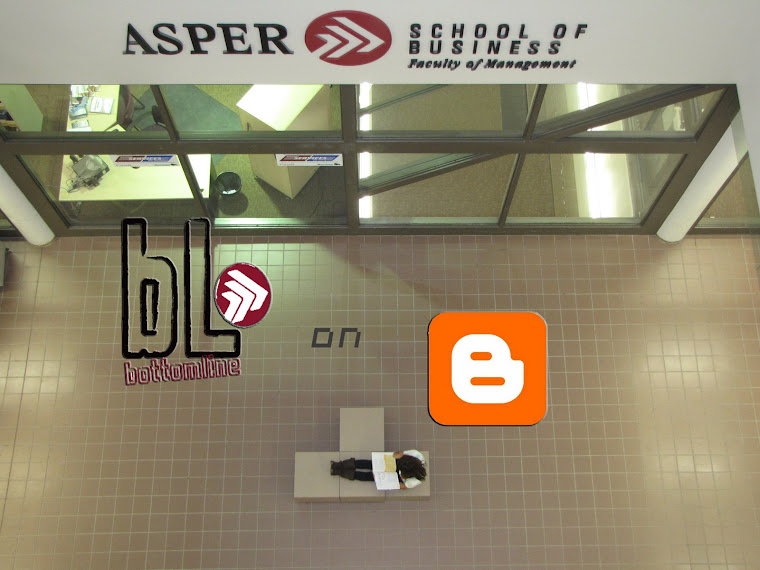
A Candid Interview with Stefano Picone, A Recent University Graduate
Who Found His Way, the Hard Way
What is your name, place of work, and job title?
My name is Stefano Picone, I live in Toronto, and I am the founder of myCAsite.com
Starting at the beginning, where did you do your schooling and what did you major in? Why?
I was born and raised in Calgary. When I graduated from high school, my parents said that I could go to any university other than the University of Calgary (let’s just say I needed some growing up to do). So I decided to go to the University of Toronto because it was the only other major city in Canada where I had family and was familiar with. I began university in September of 2000, which was the height of the Internet boom. There seemed to be so many online business opportunities, so I enrolled in Commerce figuring it would prepare me for action. Of course, the Internet quickly fizzled and I was forced to pursue something a little more pragmatic. So, I went the CA route.
After graduation, were you nervous to work in the "real world?"
I had a very difficult time transitioning from school to work. Although school involves a lot of time and effort, students have a lot of freedom in terms of when they want to study, how they want to take notes, whether to go to class, etc. And I really enjoyed this. When I began full time work, I felt there was too much structure, especially in terms of how things had to be done. Maintaining structure is very important within the CA profession.
Where did you first work and did you switch firms at any point? Why?
I started at Ernst & Young and then went to RSM Richter. The reason I switched to a mid-sized firm was because Big 4 firms are known for having very rigid audit methodologies, and again, I was trying to get away from structure.
What gave you the idea to launch your own website?
I made a lot of mistakes going through the CA process. I was terrible at recruiting, struggled with certain courses, and had a lot of unnecessary difficulties. At the time, I wished I had something like myCAsite.com to help me, so that is why I decided to build the site.
Was there a need in the market for such as website? How will it benefit students?
Virtually every student who has visited the site has said they loved it. Many of them say that the articles and message board are an invaluable resource for recruiting, homework, the UFE, transitioning to work, etc. One thing that students were really amazed with was the interview we did with Al Rosen (http://www.mycasite.com/for_web/pages/articles/interviews/al_rosen.php). Mr. Rosen is a top forensic accountant in Canada, and he deals a lot with the IFRS, which most university accounting students don't know about. In this way, the site tries to educate students on matters outside the classroom as well.
I have also had many profs and members of CA firms say that they were impressed by the site. In September, there were over 2,600 visits and over 1,100 visitors. This shows that there are a lot of people using the site. The goal is to reach 10,000 visits per month.
What were the hardships you faced in starting your own company? Did you have any help?
Starting a business is incredibly difficult because there is no template or guide to follow. I am often overwhelmed by a lack of direction, which is remarkable considering that, as I mentioned, I do not like having structure imposed on me. You also have to sacrifice a lot to start a business. A lot of the people I went to university with who are CAs have comfortable jobs and nice paycheques. They went on vacation this summer and I didn't. They are buying houses and getting married and, financially, I can't afford to do that. But I feel I would be giving up more personally by not pursuing this idea.
Fortunately, I have a lot of support from my parents and my family. They understand that I am an entrepreneurial person and they don't put pressure on me to follow everyone else and get a regular job.
What advice do you have to recent graduates who might be interested in starting their own company?
In order to become an entrepreneur, you have to be willing to embrace failure. If students stop using myCAsite.com tomorrow, and I have the shut down the site, most people will interpret that to mean that I have failed. But I know that I did the right thing by starting the site. So I'm okay with the possibility of the site not succeeding.
Where do you see the company in the future? Do you wish to expand?
Right now, I am completely focused on the short-term. As important as it is consider the future, there are so many possible outcomes. Eventually the goal is to commercialize the site, but at this point, my efforts are dedicated to marketing the site and providing as much value as possible to students.
We thank Stefano for sharing his experience, for more information check out: myCAsite.com





